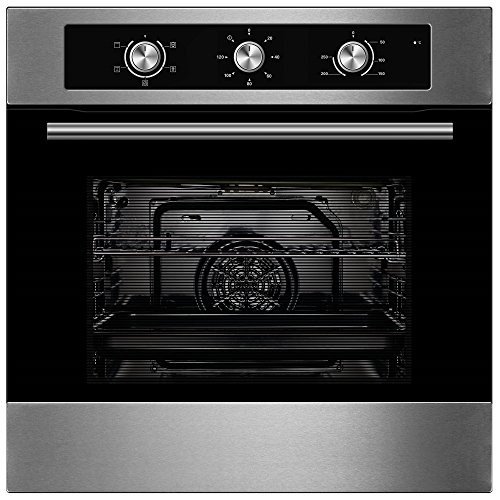Watch Out: How Hob And Oven Is Taking Over And How To Stop It

2024-11-25 19:39
81
0
0
0
본문
A Guide to Hob and Oven Cooktops
Ovens and hobs are a staple in the kitchen however, there are a variety of different models on the market. We've created a quick guide to the most popular hob cooktops:
 Easy to use and durable, solid plate hobs are able to heat sealed metal plates that are used to heat your pans. They're inexpensive to run, but they take time to heat up and cool down.
Easy to use and durable, solid plate hobs are able to heat sealed metal plates that are used to heat your pans. They're inexpensive to run, but they take time to heat up and cool down.
Gas
Although they share many features, hobs and gas stoves differ from each other. Hobs on the other hand are integrated into the counter of your kitchen and give it a sleeker look. Modern hobs are safer to use due to a revolutionary flame failure system that shuts off the gas when it detects low flames on the burner.
A gas stove has multiple burners that allow you to cook using different methods. You can regulate the heat for any recipe, from boiling water to cooking. The burners can be individually turned off or on to maximize your energy consumption.
Gas stoves have a projecting design, and a pipe to connect them to an LPG cylinder. Hobs are sleek and integrated and are on the same level as the kitchen's platform. Therefore, you won't need to think about moving the cooker should you wish to alter your kitchen layout in the near future, unlike a freestanding stove.
Gas stoves also require an additional gas pipe and a ventilation system, which can add to installation costs. This kind of hob is more likely to have more energy consumption than electric or induction models, depending on the energy rates in your area and usage habits.
With a gas hob, natural gas is piped to the burners via an opening to the back of the appliance. When you turn the cooker control knob, it triggers a valve regulator that allows gas to flow into the burners. Once the valve regulator is activated, the cooktops are ready to cook.
Gas hobs, aside from being easier to use and more convenient, are also easier for you to clean than gas ranges. A traditional gas stove may contain a lot of crevices where food spills can collect. Modern stoves have a flat glass surface which eliminates this problem and is easy to clean. The unique gas hobs from FUJIOH are also easy to maintain, since you can remove the aluminum alloy burner and venturi parts for a thorough cleaning.
Electric
Hobs are an integral component of any kitchen fitted. It could be a gas hob, electric hob or even a solid plate cooker that is a classic option. They're great for flat-based items such as pans, and they're easy to use. These can be more expensive to run as they take longer to heat and cool than other options. However they are extremely durable and easy to clean.
If you're looking for something little more contemporary and modern, an electric ceramic stove is a great choice. The fascia is washable and they are stylish. The cooking rings are independently controlled and can be adjusted in dimensions, allowing you to cook multiple dishes at once. This is great for busy households. There are also models that combine electric and induction to make the most of both.
Gas induction hobs can also be equipped with a stainless-steel finish to give a more traditional look. They're also quicker to heat than a conventional gas hob and can be easier to control. They use an induction element to directly heat your pans, thereby stopping any heat remaining from being wasted around the stove like you would with gas cookers.
Induction hobs are more expensive to purchase but they are also less expensive to operate because they have a faster heating process than gas and produce less heat residual. They are also more consistent with their temperature, so you're less likely to end with hot spots on your hob.
Plate hobs are typically a cheaper option, but aren't as efficient as other hobs. They're an excellent choice for those who are brand new to cooking as they're simple and easy to use. They're not recommended for people with children, however, since they're very easy to burn yourself in case you're not careful. They're also not suitable for heavy cast iron pots or woks as they can be prone to warping.
Induction
Contrary to traditional electric or gas hobs, induction cooktops won't warm up the ring; instead they use electromagnetic technology to generate heat in your pan. This is accomplished by copper coils beneath the glass surface, which emit an electromagnetic field when turned on, which creates a magnetic current that is dynamically generated in the pan's metal to induce eddy currents and heat it up.
The benefit is that only the area of the pot and not the entire surface of the cooktop made of glass - is heated, so it's safer to touch and clean too. It also can boil water and cook food quicker than traditional cooktops too.
But induction technology isn't without its drawbacks. You shouldn't use non-ferrous aluminium pans without the addition of copper or iron on the bottom. These metals aren't great conductors. Today you can find a variety of induction-ready pans. These include enameled cast iron and stainless steal. Glass, too, if equipped with an induction-ready base, can be used.
Induction hobs also use less energy and release little heat from the air. Induction cooktops have been awarded the Energy Star Emerging Technology Award by the EPA for their efficiency. They could save you lots of money on your energy bills.
Another drawback is that electromagnetic fields created by induction hobs could interfere with some pacemakers, however this is contingent on the kind of device you've installed. Speak to your GP or cardiac Electrophysiologist in case you're not sure. They'll be able advise you on whether an induction unit is compatible with your specific pacemaker and, if it is the case, how far from the device you should keep it to minimise interference.
Plate
Oven-safe plates are essential to any home cook. They keep food warm and are perfect for stews, soups, and other dishes best served warm. These oven-safe dinnerware items are made from sturdy stoneware that can withstand extreme temperatures. They are also dishwasher safe which makes cleaning up easy. These plates can be used to serve warm foods like fresh bread.
A plate can be made from glass, stoneware, or ceramic. Each material has unique properties which make it suitable for various cooking techniques and uses. For oven-safe plates, glass and stoneware are the most popular options. Metal plates however, can be extremely heavy and may harm your kitchen flooring. It is important to read the specifications of the manufacturer before using an oven-safe plate. It is recommended to avoid rapid temperature changes, such as putting a cold plate into an oven that has been preheated. This could cause thermal shock, which could lead to cracking or shattering.
In the UK, a large unit with a hob and oven is referred to as Stove. Stoves come with an lower section that is used to bake or roast and a set heat rings on top, where you can place pans to cook. It is very common for people to have separate hobs and ovens, but some people prefer a cooker that includes both a hob and an oven.
 For the first time, Lhov has introduced an all-in-one appliance that incorporates hob, oven, and extraction in one stunning device. Its sleek design and black glass make it virtually invisible in the kitchen. But, its unique features, many different cooking methods and zones, and its unique features provide unparalleled aesthetics. It even allows you to control the appliance with a voice assistant. The innovative extraction system is able to remove fumes and odors from the hob and the oven. This allows you to enjoy healthy and delicious meals without stress.
For the first time, Lhov has introduced an all-in-one appliance that incorporates hob, oven, and extraction in one stunning device. Its sleek design and black glass make it virtually invisible in the kitchen. But, its unique features, many different cooking methods and zones, and its unique features provide unparalleled aesthetics. It even allows you to control the appliance with a voice assistant. The innovative extraction system is able to remove fumes and odors from the hob and the oven. This allows you to enjoy healthy and delicious meals without stress.
Ovens and hobs are a staple in the kitchen however, there are a variety of different models on the market. We've created a quick guide to the most popular hob cooktops:
 Easy to use and durable, solid plate hobs are able to heat sealed metal plates that are used to heat your pans. They're inexpensive to run, but they take time to heat up and cool down.
Easy to use and durable, solid plate hobs are able to heat sealed metal plates that are used to heat your pans. They're inexpensive to run, but they take time to heat up and cool down.Gas
Although they share many features, hobs and gas stoves differ from each other. Hobs on the other hand are integrated into the counter of your kitchen and give it a sleeker look. Modern hobs are safer to use due to a revolutionary flame failure system that shuts off the gas when it detects low flames on the burner.
A gas stove has multiple burners that allow you to cook using different methods. You can regulate the heat for any recipe, from boiling water to cooking. The burners can be individually turned off or on to maximize your energy consumption.
Gas stoves have a projecting design, and a pipe to connect them to an LPG cylinder. Hobs are sleek and integrated and are on the same level as the kitchen's platform. Therefore, you won't need to think about moving the cooker should you wish to alter your kitchen layout in the near future, unlike a freestanding stove.
Gas stoves also require an additional gas pipe and a ventilation system, which can add to installation costs. This kind of hob is more likely to have more energy consumption than electric or induction models, depending on the energy rates in your area and usage habits.
With a gas hob, natural gas is piped to the burners via an opening to the back of the appliance. When you turn the cooker control knob, it triggers a valve regulator that allows gas to flow into the burners. Once the valve regulator is activated, the cooktops are ready to cook.
Gas hobs, aside from being easier to use and more convenient, are also easier for you to clean than gas ranges. A traditional gas stove may contain a lot of crevices where food spills can collect. Modern stoves have a flat glass surface which eliminates this problem and is easy to clean. The unique gas hobs from FUJIOH are also easy to maintain, since you can remove the aluminum alloy burner and venturi parts for a thorough cleaning.
Electric
Hobs are an integral component of any kitchen fitted. It could be a gas hob, electric hob or even a solid plate cooker that is a classic option. They're great for flat-based items such as pans, and they're easy to use. These can be more expensive to run as they take longer to heat and cool than other options. However they are extremely durable and easy to clean.
If you're looking for something little more contemporary and modern, an electric ceramic stove is a great choice. The fascia is washable and they are stylish. The cooking rings are independently controlled and can be adjusted in dimensions, allowing you to cook multiple dishes at once. This is great for busy households. There are also models that combine electric and induction to make the most of both.
Gas induction hobs can also be equipped with a stainless-steel finish to give a more traditional look. They're also quicker to heat than a conventional gas hob and can be easier to control. They use an induction element to directly heat your pans, thereby stopping any heat remaining from being wasted around the stove like you would with gas cookers.
Induction hobs are more expensive to purchase but they are also less expensive to operate because they have a faster heating process than gas and produce less heat residual. They are also more consistent with their temperature, so you're less likely to end with hot spots on your hob.
Plate hobs are typically a cheaper option, but aren't as efficient as other hobs. They're an excellent choice for those who are brand new to cooking as they're simple and easy to use. They're not recommended for people with children, however, since they're very easy to burn yourself in case you're not careful. They're also not suitable for heavy cast iron pots or woks as they can be prone to warping.
Induction
Contrary to traditional electric or gas hobs, induction cooktops won't warm up the ring; instead they use electromagnetic technology to generate heat in your pan. This is accomplished by copper coils beneath the glass surface, which emit an electromagnetic field when turned on, which creates a magnetic current that is dynamically generated in the pan's metal to induce eddy currents and heat it up.
The benefit is that only the area of the pot and not the entire surface of the cooktop made of glass - is heated, so it's safer to touch and clean too. It also can boil water and cook food quicker than traditional cooktops too.
But induction technology isn't without its drawbacks. You shouldn't use non-ferrous aluminium pans without the addition of copper or iron on the bottom. These metals aren't great conductors. Today you can find a variety of induction-ready pans. These include enameled cast iron and stainless steal. Glass, too, if equipped with an induction-ready base, can be used.
Induction hobs also use less energy and release little heat from the air. Induction cooktops have been awarded the Energy Star Emerging Technology Award by the EPA for their efficiency. They could save you lots of money on your energy bills.
Another drawback is that electromagnetic fields created by induction hobs could interfere with some pacemakers, however this is contingent on the kind of device you've installed. Speak to your GP or cardiac Electrophysiologist in case you're not sure. They'll be able advise you on whether an induction unit is compatible with your specific pacemaker and, if it is the case, how far from the device you should keep it to minimise interference.
Plate
Oven-safe plates are essential to any home cook. They keep food warm and are perfect for stews, soups, and other dishes best served warm. These oven-safe dinnerware items are made from sturdy stoneware that can withstand extreme temperatures. They are also dishwasher safe which makes cleaning up easy. These plates can be used to serve warm foods like fresh bread.
A plate can be made from glass, stoneware, or ceramic. Each material has unique properties which make it suitable for various cooking techniques and uses. For oven-safe plates, glass and stoneware are the most popular options. Metal plates however, can be extremely heavy and may harm your kitchen flooring. It is important to read the specifications of the manufacturer before using an oven-safe plate. It is recommended to avoid rapid temperature changes, such as putting a cold plate into an oven that has been preheated. This could cause thermal shock, which could lead to cracking or shattering.
In the UK, a large unit with a hob and oven is referred to as Stove. Stoves come with an lower section that is used to bake or roast and a set heat rings on top, where you can place pans to cook. It is very common for people to have separate hobs and ovens, but some people prefer a cooker that includes both a hob and an oven.
 For the first time, Lhov has introduced an all-in-one appliance that incorporates hob, oven, and extraction in one stunning device. Its sleek design and black glass make it virtually invisible in the kitchen. But, its unique features, many different cooking methods and zones, and its unique features provide unparalleled aesthetics. It even allows you to control the appliance with a voice assistant. The innovative extraction system is able to remove fumes and odors from the hob and the oven. This allows you to enjoy healthy and delicious meals without stress.
For the first time, Lhov has introduced an all-in-one appliance that incorporates hob, oven, and extraction in one stunning device. Its sleek design and black glass make it virtually invisible in the kitchen. But, its unique features, many different cooking methods and zones, and its unique features provide unparalleled aesthetics. It even allows you to control the appliance with a voice assistant. The innovative extraction system is able to remove fumes and odors from the hob and the oven. This allows you to enjoy healthy and delicious meals without stress.
0
0
로그인 후 추천 또는 비추천하실 수 있습니다.







댓글목록0
댓글 포인트 안내